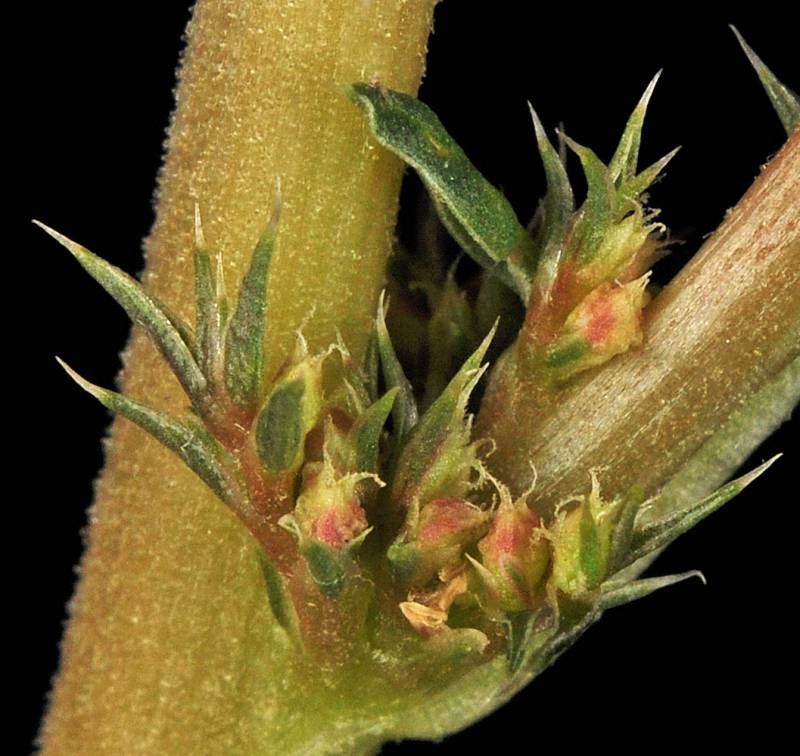Amaranthus muricatus
Amaranthus albus
white pigweed, tumbleweed
Leaves alternate, petiolate, petiole 5-40 mm;
blade obovate to narrowly spoon-shaped, base narrowly cuneate, apex obtuse to acute, margins entire and may be flat or occasionally wavy;
cauline leaves 40-80 mm long and 15-30 mm broad, usually deciduous and replaced by axillary leaves, 7-20 mm long and 3-10 mm broad.
Inflorescence a cymose axillary cluster, green, 3-flowered;
bracts 1, 1.5-4 mm, generally 1.5-2 times the perianth, linear-lanceolate to awl-shaped, tip somewhat spined.
Staminate flowers dispersed among pistillate flowers, perianth parts 3, stamens 3, filaments free, anthers 4-locular; pistillate flowers perianth parts 3, to 2 mm, oblong-lanceolate to linear, tip acute, stigmas 3 and erect, ovary ovoid, styles absent.
Utricles dehiscing along a fissure encircling the whole fruit, 1.5-2 mm, larger than or equal to perianth, ellipsoid-ovoid, greenish white to brown, wrinkled especially near tip;
seed approximately 1 mm, lenticular, reddish brown, smooth, shiny.
Amaranthus muricatus
Amaranthus albus
- Local floras:
BC,
CA,
OR,
WA
- Local Web sites:
CalFlora,
CalPhotos,
Flora NW,
PNW Herbaria
WildflowerSearch
iNaturalist (observations)
USDA Plants Database
- LBJ Wildflower Center
- SEINet
- Plants of the World Online
- Encyclopedia of Life
- Wikipedia
- Google Image Search


